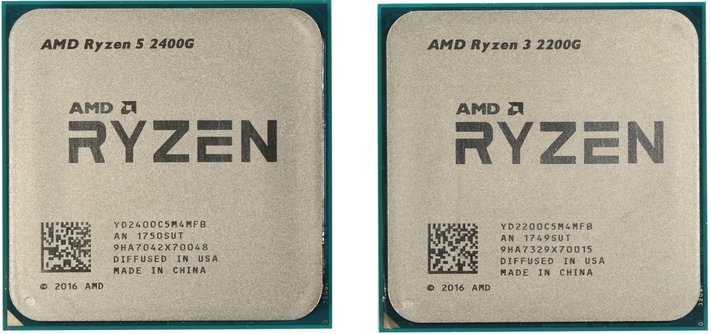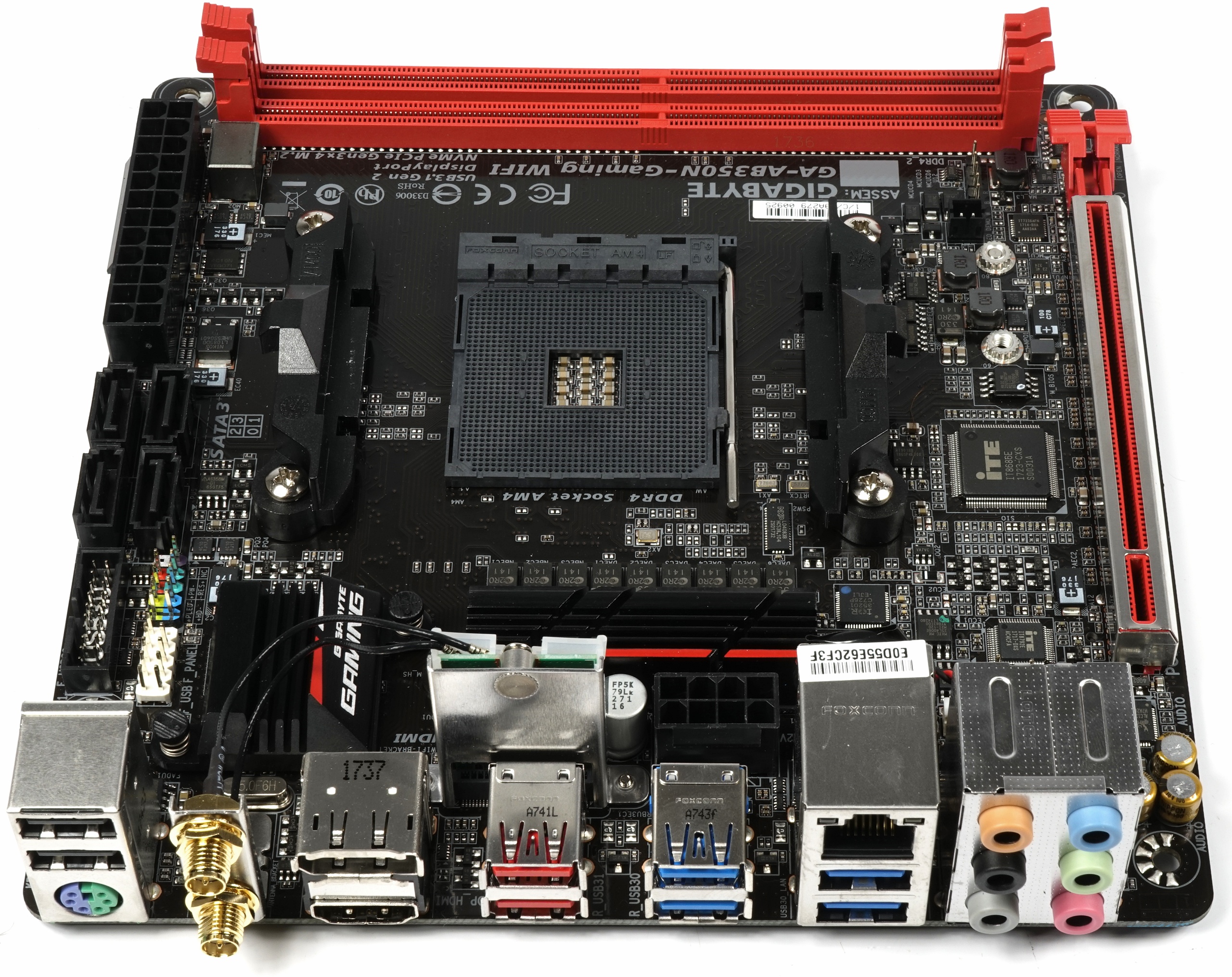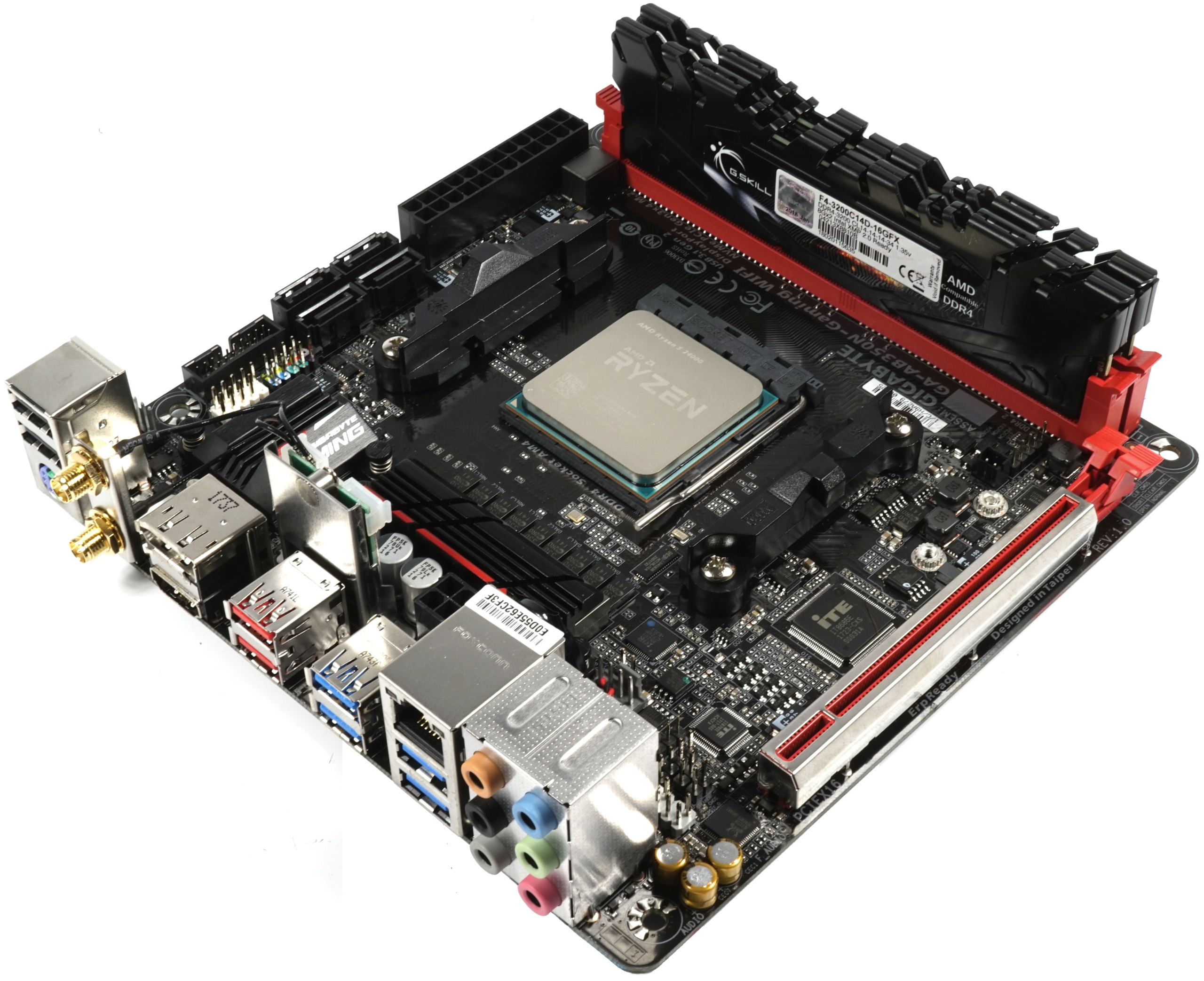With Ryzen 5 2400G and Ryzen 3 2200G, AMD is sending two new APUs into the entry-level and mid-range segments that combine both Zen and Vega genes. This could make this combination a useful alternative to computers with discrete individual components in many areas. Today's test should clarify how well this has been achieved and especially for whom such a solution should be interesting.

What's new about "Raven Ridge"?
Although AMD's "Raven Ridge" APUs are based on the same cores as the Ryzen CPUs, a lot has changed. On the one hand, you get even more bar for the same money, which follows a logical pattern. After all, it is not a new realization that PC games are mostly very tactically sensitive. The identical 14nm+ process allowed AMD to use clock limits similar to Ryzen's, so that in the end, including the improvements we will discuss later, you will find a very interesting offer.
| Model | Ryzen 5 2400G | Ryzen 3 2200G | Ryzen 5 1400 |
|---|---|---|---|
| Cores / Threads | 4 / 8 | 4 /4 | 4 /8 |
| CCX Configuration | 4+0 | 4+0 | 2+2 |
| CPU clock |
3.6-3.9 GHz | 3.5-3.7 GHz | 3.2-3.4 GHz |
| GPU Shader |
11 CU = 704 | 8 CU = 512 | — |
| GPU clock |
1250 MHz | 1100 MHz | — |
| Cache L2/L3 | 2/4 MB | 2/4 MB | 2/8 MB |
| Tdp | 46-65 W | 46-65 W | 65 W |
| GPU PCIe Lanes |
8x | 8x | 16x |
| Storage Controller | DDR4-2933 Dual Channel | DDR4-2933 Dual Channel | DDR4-2667 Dual Channel |
| Transistor | 4.94 billion | 4.94 billion | 4.8 billion |
| The size | 209.78 mm2 | 209.78 mm2 | 213 mm2 |
| Price (SRP) |
€165 | 96 € | €159 |
We see that "Raven Ridge" uses a 4+0 configuration and thus relies on a complete CCX. Discussions about which constellation is now the most favorable have dragged on since the release of "Ryzen", but AMD ultimately felt that the 2+2 constellation of "Ryzen" and the 4+0 at "Raven Ridge" in more than 50% of the games probably took nothing away. Should.
One can now argue with relish about where the advantages and disadvantages are now, because the larger cache of the 2+2 variant is contrasted with the lower latency when using only one CCX. However, the decision to reduce the L3 cache from 8MB to 4MB is to be compensated (for the most part) by higher clock rates. So you can turn it and turn it as you like, in the end the space saving of the one-CCX-design was probably the decisive factor.

In "Raven Ridge", AMD relies on simple x8 PCIe lanes instead of x16, which is mainly for manufacturing reasons. In terms of performance, however, this is still sufficient, but you can significantly reduce your own costs, which is why you can already offer an entry-level model under 100 USD with the Ryzen 3 2200G.

This now possible savings are also based on cost-reducing changes in packaging and manufacturing, including a revised CPU package and the transition to a traditional non-metallic thermal paste for the 2400G and 2200G. So the APUs are no longer soldered!
These changes improve the price competitiveness of APUs in a rather competitive middle-class market. In addition, the new models offer the official support of JEDEC DDR4-2933, the highest official memory clock of all current consumer processors.

Also new is Precision Boost 2. Precision Boost 2's more elegant and linear boost algorithm allows the Raven Ridge design to use more cores more efficiently, more frequently and with more workloads than previously with Ryzen. We will go into this in more detail in a while.
Of course, making a scalable midrange product always requires a lot of compromises, but AMD is confident that it has found a good balance that also allows you to use economical models with 12 watts of TDP for the mobile sector up to to the desktop models with 65 watt TDP almost perfectly scale.
If you are toying with a cheap LYP, the following features of the implemented video decoding (and encoding) are certainly not entirely uninteresting:

The connection of external displays or TV sets are important if, for example, there is Ultra HD, HDR and refresh rates. AMD hasn't cracked the APUs and also offers FreeSync without restriction:

Also on board are the small versions of the (unlit) Wrait cooler, which are manufactured by AVC as always and which have the well-known mounting system for the AM4 base with screws instead of wobbly push pins or a clamp attachment.

Test system, test methods and a follow-up
 We are testing the two new AMD Ryzen 5 2400G and Ryzen 3 2200G on a suitable socket AM4 platform. For this we use a space-saving gigabyte AB350N GAMING WIFI in mini-ITX format, 2x 8GB G.Skill FlareX DDR4 3200 and cool the APUs, as just mentioned, with the boxed cooler, which AMD calls Wraith cooler.
We are testing the two new AMD Ryzen 5 2400G and Ryzen 3 2200G on a suitable socket AM4 platform. For this we use a space-saving gigabyte AB350N GAMING WIFI in mini-ITX format, 2x 8GB G.Skill FlareX DDR4 3200 and cool the APUs, as just mentioned, with the boxed cooler, which AMD calls Wraith cooler.
We would like to point out at this point that we have dealt with the points of power consumption, clock progression, temperatures and throttling / limitations in a very detailed follow-up, which can be read here:
AMD Ryzen 5 2400G and Ryzen 3 2200G: Power consumption, clock and temperature
s
 |
 |
For radiator mounting, it is essential to remove the old radiator attachment of the AM2 and AM3 generation first and also recommend sizing the loose backplate with double-sided, thin power tape.
 |
 |
The picture shows our very space-saving test setup, which should certainly fit into many Mini-ITX enclosures. If the Boxed cooler is too high, you can also resort to shallower 3rd party coolers as long as they offer sufficient reserves.

Interested parties can quickly get a brief overview of the summary in table form before we start (after some what is necessary):
| Test systems and measuring rooms | |
|---|---|
| Hardware: |
AMD Ryzen 5 2400G, Ryzen 3 2200G Gigabyte AB350N GAMING WIFI 2x 8GB G.Skill FlareX DDR4 3200 1x 1050 GB Crucial MX300 Be Quiet Dark Power Pro 11, 850-watt power supply |
| Cooling: |
AMD Boxed Cooler |
| Housing: |
Microcool Banchetto 101 |
| Monitor: | Eizo EV3237-BK |
| Operating system | Windows 10 Pro (1709, all updates) |
- 1 - Einführung und Testsystem
- 2 - Ryzen als Basis, aber mit Verbesserungen
- 3 - Kernschmelze von Zen und Vega für die Grafik
- 4 - Gaming: Vorwort und 3DMark
- 5 - Gaming: Battlefield 1
- 6 - Gaming: Civilization VI
- 7 - Gaming: Grand Theft Auto V
- 8 - Gaming: Dota
- 9 - Gaming: Far Cry Primals
- 10 - Gaming: The Witcher 3
- 11 - Anwendungs- und Office-Benchmarks
- 12 - Zusammenfassung und Fazit































Kommentieren